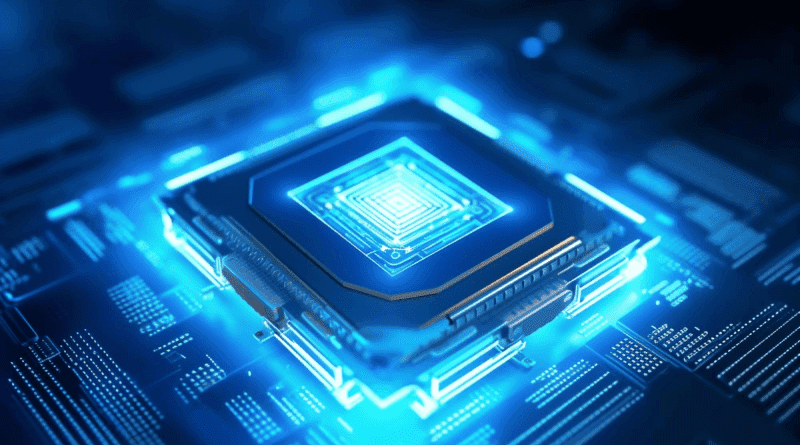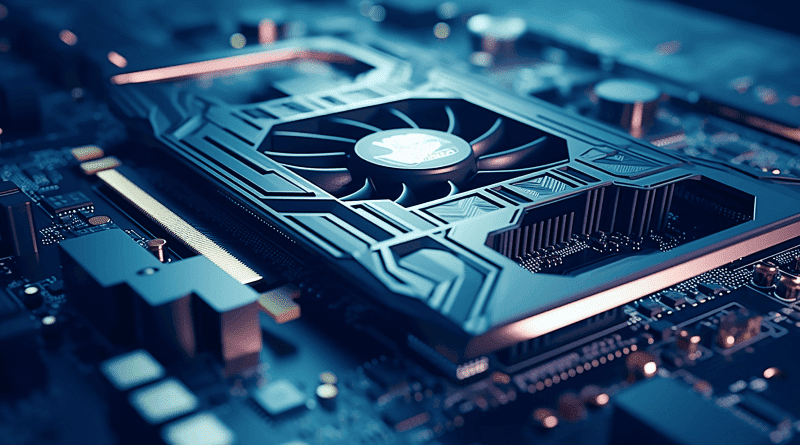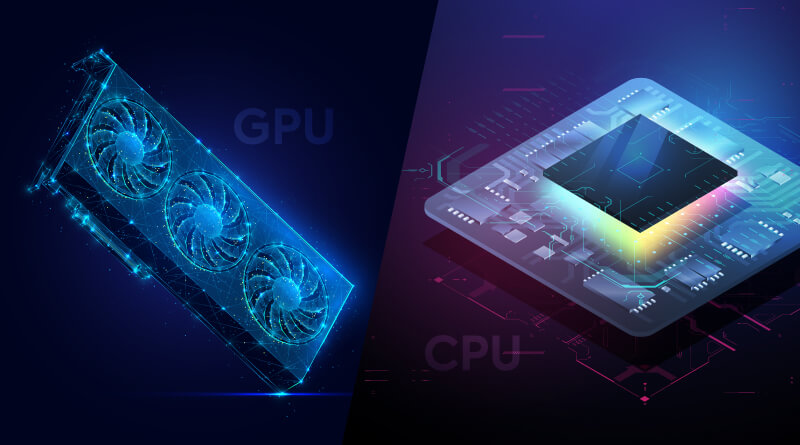With the increase in computation capabilities and growing demands of various organizations, the need for computing power is evolving. As a result, today’s systems are expected to function at the highest capabilities, whether for deep learning applications, massively parallel computing, intense 3D gaming, or any demanding workload. To meet these challenges, industries are increasingly turning to solutions like the GPU Cloud server, which offer the flexibility and power needed to handle such intense computational demands.
Here is the most awakening topic on how industries are coping with computational needs with the help of CPU & GPU.
Table of Content
What is CPU?
In computers, the CPU (Central Processing Unit) is the primary component that controls main technical functions. It is a set of electronic circuitry systems that includes the central or main processor which processes machinery instructions. The machine interprets, processes, and executes instructions that is given by the hardware or software installed on the device.
Many web hosting companies have servers with multiple hexa-core CPUs. This is because the server handles mission-critical workloads. A CPU contains multiple cores for high-performance processing.

What is GPU?
A graphics processing unit (GPU) is an electronic circuit that can perform mathematical calculations at high speed. GPUs are designed to process images and accelerate the rendering of 3D computer graphics on consumer devices, such as computers, smartphones, and gaming consoles.
GPUs are useful for tasks like: Graphics rendering, Machine learning (ML), Video editing, Gaming applications, Computer vision, Deep learning, Generative AI.
GPUs can process many pieces of data simultaneously. This process is called GPU computing, which is the process of offloading processing needs from a central processing unit (CPU). GPU dedicated servers are helpful for doing this heavy workload of tasks.

CPU & GPU: Informative Insight
The fundamental computing units are Central Processing Units (CPUs) and Graphics Processing Units (GPUs). However, as computing demands change, it is not always clear what the distinctions between CPUs and GPUs are and which workloads are best suited to each.
The functions of a central processing unit (CPU) and a graphics processing unit (GPU) are very different. For example, CPU power is used for traditional desktop processing, and GPU power is increasingly used in other areas.
How CPU & GPU Work Together?
A CPU (central processing unit) and a GPU (graphics processing unit) collaborate to boost data throughput and the number of concurrent calculations within an application. GPUs were initially developed to generate visuals for computer graphics and video game consoles. Still, from the early 2010s, GPUs have also been used to speed up calculations requiring enormous quantities of data.
A GPU will never wholly replace a CPU: it complements CPU design by allowing repetitive computations inside an application to perform in parallel. At the same time, the primary program continues to run on the CPU. The CPU serves as the system’s taskmaster, coordinating various general-purpose computing operations, while the GPU performs a smaller range of specialized duties (usually mathematical). A GPU may perform more work in the same amount of time than a CPU due to the power of parallelism.
CPU vs GPU: Key Comparison
Below is the perfect CPU vs GPU difference given in the tabular format.
| Feature | CPU | GPU |
| Function | All-purpose tasks, sequential processing. | Graphics, parallel processing for complex calculations. |
| Cores | Fewer, powerful cores. | Many, simpler cores. |
| Clock Speed | Lower | Higher |
| Memory | Smaller, general-purpose memory. | Larger, dedicated VRAM for graphics. |
| Versatility | High | Lower |
| Power Consumption | Lower | Higher |
| Price | Generally cheaper | Generally more expensive |
CPU vs. GPU Processing
Due to tremendous parallelism, GPUs can process data several orders of magnitude quicker than CPUs. However, GPUs are not as adaptable as CPUs. CPUs have vast and diverse instruction sets that manage all of a computer’s input and output, whereas a GPU cannot. A server environment may have 24 to 48 high-speed CPU cores. Adding 4 to 8 GPUs to this same server can give up to 40,000 more cores. While individual CPU cores are quicker and more innovative than individual GPU cores, the sheer number of GPU cores and massive parallelism compensate for the single-core clock speed disadvantage and restricted instruction sets.
GPUs excel at repetitive and massively parallel processing jobs. For example, GPUs excel at machine learning, financial simulations, risk modeling, and various other scientific computations in addition to video rendering. While GPUs were formerly used to mine cryptocurrencies such as Bitcoin or Ethereum, they are no longer widely employed at a scale, giving place to specialized hardware like as Field-Programmable Grid Arrays (FPGA) and eventually Application Specific Integrated Circuits (ASICs) (ASIC).
Examples of CPU to GPU Computing
- CPU and GPU video rendering: A graphics card can convert video from one graphics format to another quicker than a CPU.
- Data acceleration: A GPU has superior computation capabilities that allow it to handle more data in less time than a CPU. The GPU may offload such tasks when specialized applications like deep learning or machine learning need sophisticated mathematical computations. This frees up time and resources for the CPU to focus on other activities.
- Cryptocurrency mining: It utilizes a computer as a relay to process transactions to get virtual currencies such as Bitcoin. While a CPU may accomplish this operation, a GPU with a graphics card can assist the computer in producing cash far more quickly.
Does HEAVY.AI Support CPU and GPU?
Yes. The GPU Open Analytics Initiative (GOAI) and its inaugural project, the GPU Data Frame (GDF, now cudf), were the first steps toward an open ecosystem for end-to-end GPU computing in the industry. The RAPIDS project’s primary purpose is to enable effective intra-GPU communication between various processes operating on GPUs.
Users can effortlessly switch a process running on the GPU to another method without moving the data to the CPU as cudf usage expands within the data science ecosystem. By eliminating intermediary data serializations across GPU data science tools, processing times are reduced considerably.
Furthermore, because cudf uses inter-process communication (IPC) features in the Nvidia CUDA programming API, processes may send a handle to the data rather than copying it, resulting in almost no overhead transfers. As a result, the GPU becomes a first-class compute citizen, and its processes may interact just as readily as processes on the CPU.
FAQs
1. Is it better to run applications on CPU or GPU?
It depends on the application that you are running. CPU is better for complex, non-repetitive tasks like web browsing, word processing, and running multiple applications simultaneously. Whereas, GPU excels at parallel processing, ideal for graphics-intensive tasks like gaming, video editing, and machine learning.
2. How to use GPU instead of CPU?
Not all applications can readily utilize GPUs. You need software specifically designed to leverage GPU processing. However, if the software supports it, some operating systems allow manually selecting GPU processing in settings.
3. Can a GPU be used as a CPU?
While GPUs are powerful processors, they lack the versatility of CPUs. They handle specific tasks efficiently, but cannot manage overall computer operations like a CPU.
4. Can CPU be faster than GPU?
In some situations, yes. CPUs have faster individual core speeds, making them better for tasks requiring complex logic and quick switching between tasks. However, for tasks involving massive parallel processing of data, GPUs will outperform CPUs significantly.







